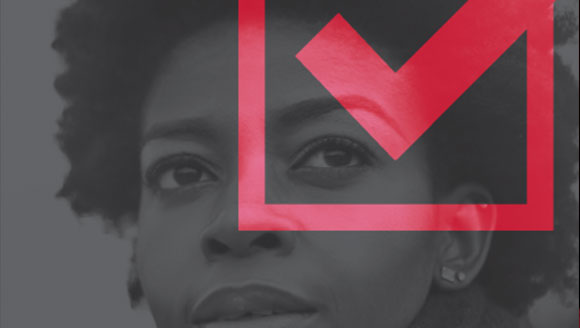Beyond Their Means: Higher Education Loans Bankrupt America’s Future
 Wade Henderson
Wade Henderson
Founding Board Member & Senior Advisor, Center for Responsible Lending
Twitter: @Wade4Justice
 Ashley Harrington
Ashley Harrington
Special Assistant to the President; Counsel, Center for Responsible Lending
Once upon a time, higher education loans were valued as “good debt.” Today, these loans, once considered stepping stones on the path to the American Dream, are stripping wealth from individuals and communities and saddling many with a long-term financial obligation—and little prospect of repayment.
Now more than ever, higher education is recognized as a universally de facto requirement for middle-class entry. However, the amount of borrowing necessary to acquire a post-secondary education constrains a borrower’s ability to one day buy a home, start a business, save for retirement, or explore other wealth-building options. In other words, this highly sought after academic credential often fails to translate into wealth or the tangible benefits associated with middle and higher-income status. This is the proverbial “rock and hard place” that our current government-sanctioned and taxpayer-funded system has created for so many Americans, especially students of color. African-Americans, Latinos, and Asian-Americans now represent more than 50% of K-12 students, constituting a significant portion of our nation’s next generation of post-secondary students, future home owners, and business owners.
As part of its commitment to achieve racial justice and alleviate poverty, Congress passed the Higher Education Act of 1965 (HEA). This critical legislation was a significant feature of President Lyndon Johnson’s “Great Society” agenda. The HEA intended to open doors of opportunity and create unprecedented access to higher education, especially for students of color. However, in 2018, while the door may be open, the cover charge is so prohibitively high that it can neither be called nor considered meaningful access. The cost of college has skyrocketed over a relatively short period of time, whereas incomes remain largely stagnant. While college costs rise, states have been disinvesting in higher education; and federal grant aid has stayed flat—decreasing the federal aid students receive as a share of the cost of attendance. As a result, students and families now bear the brunt of these mounting costs, as reflected by the current tab of $1.4 trillion dollars in outstanding student loans held by 44 million Americans.
The costs have been much higher for people of color, who are more likely to take out loans and at higher amounts. They also take longer to repay loans than their white counterparts. Students of color pursue post-secondary education in a social and economic system built on racist ideologies and infused with hidden, seemingly unconscious bias that creates and perpetuates the racial wealth, income, and achievement gaps.[i] Oftentimes, students of color navigate the student loan industrial complex with less familial financial support or knowledge about the complexities of the system. And more so than their white counterparts, students of color are likelier to be more than just students. They are also caregivers, or parents, or full-time job holders. And, with over 65% of all jobs requiring some form of post-secondary education by 2020, higher education is neither a luxury nor a choice; it is a necessity.[ii]
Currently, student borrowers have two primary options to cover college costs not covered by grant aid, scholarships, or savings: federal loans through the Direct Loan program or private loans offered through various lenders. Parents of dependent undergrads may also borrow to help a student finance college.[iii]
Access to federal loans is generally limited to the educational institution’s designated cost of attendance minus the Expected Family Contribution (EFC), with statutory lifetime and yearly limits. After program completion or termination, federal loan holders have access to various repayment options, including a standard 10-year plan and programs that set monthly repayment amounts based on the borrower’s income. These programs also provide for taxable loan forgiveness after 20 or 25 years or even tax-free loan forgiveness after 10 years for certain professions. Despite these options, defaults continue to occur at an alarming rate, especially for borrowers of color. Almost half (49%) of Black borrowers and 36% of Latino borrowers who began college in 2003-2004 defaulted within 12 years of entry, compared to 21% of white students. Black bachelor’s degree holders default at five times the rate of white graduates (21% and 4%, respectively). In fact, Black college graduates are more likely to default than white dropouts (18%).
As of September 2017, approximately 4.6 million borrowers were in default and more than 10% of the outstanding student loan debt ($140 billion) was in default. Almost 90% of the defaulters were Pell Grant recipients and the median amount owed was less than $10,000. One theory is that many students who qualify for income-based repayment do not enter the programs or fail to recertify, possibly due to lack of awareness, confusion about the options, or servicer error. Another theory is that income-based repayment options, as currently structured, are insufficient due to their complexity and the risk of an unaffordable tax liability at the end of the repayment period. The consequences of default are enormous—student loans are almost impossible to discharge in bankruptcy, and if you default on a federal student loan, the federal government can garnish your wages, offset tax refunds and even offset debt against future social security payments.[iv]
In response to this alarming default rate and the growing amount of debt, advocates have focused on several ways to reform the system. Suggested reforms include simplifying income-based repayment options and making enrollment easier; improving incentives for loan servicers to help borrowers avoid delinquency and get into positive repayment status; allowing for refinancing of private loans; lowering interest rates on federal loans overall; and expanding loan forgiveness options. Advocates also focus on reigning in the predatory for-profit college sector. These institutions prey on students of color and lack accountability for their excessive costs, poor program quality and even poorer student outcomes. Moreover, regulations and statutes that would hold these schools accountable have recently been rolled back.
These are all important and viable reforms. However, we recognize that they must be coupled with efforts to reduce the cost of college and increase affordable access by fully restoring states’ investment in higher education, providing more grant aid at the federal level, and increasing support for institutions that have best served students of color at an affordable price, namely historically Black colleges and universities (HBCUs) and other Minority-Serving Institutions (MSIs).
The conversation must consider the civil rights implications of this crisis and its impact on wealth and income for people of color. Today, the Black home ownership rate is the same as it was in 1968 at the passage of the Fair Housing Act. Divergent rates of homeownership are a significant factor in the racial wealth gap between whites and people of color. If this disparity is addressed, we would see the wealth gap shrink 31% for African Americans and 28% for Latinos.
Moreover, if Blacks were paid on par with their white counterparts, one can imagine that they would be better able to manage their debt and ensure that future generations will need fewer loans to pursue post-secondary education. Many students of color also often receive a substandard K-12 education that fails to adequately prepare them for higher education. If we made real efforts to improve our elementary and secondary schools, many of which are now more separate and unequal than ever, students of color could enter college better prepared, spend less time matriculated, and spend less money to complete their degrees.
The racial dimensions of this issue cannot be ignored. Student debt is most assuredly a civil rights issue, perhaps one of the most defining issues of our time. And while the student debt burden has been and will be borne predominantly by people of color, the effects of our moral and political failure to address the student loan crisis will reverberate throughout our society and economy. The current student debt system, rather than lifting people out of poverty and providing access to the middle class, is further entrenching the racial wealth gap and perpetuating the cycle of poverty that results from systemic lack of access to resources, capital, and affordable credit. Our short-sighted approach is leaving jobs vacant, money wasted, and human potential squandered—threatening our national security and economic well-being.
This is an element of the crisis that few are talking about. It has all the milestones that led to the mortgage crisis of 2008, including facially-neutral policies with a demonstrated disparate impact on people of color. The housing crash—a crisis hidden in plain sight—shattered Black and brown communities in its infancy and grew to fracture the entire national economy in its maturation.
The student loan debt crisis is not a question in search of an answer. It is a problem that we, as a nation, have the capacity to address. So far, we have failed to act. The “Great Society” goals must again be true so that all Americans have the opportunity to use education as a meaningful gateway to prosperity. Then, and only then, will we have an America as good as its ideals.
[i] The National Advisory Commission on Civil Disorders (“Kerner Commission”) discussed two “separate and unequal” societies (one black, one white). Fifty years later, we are still struggling with this reality despite the availability of reforms. Fred Harris and Alan Curtis, “The Unmet Promise of Equality,” The New York Times (Feb. 28, 2018) https://www.nytimes.com/interactive/2018/02/28/opinion/the-unmet-promise-of-equality.html.
[ii] Moreover, over 95% of jobs created since the Great Recession have gone to those with at least a bachelor’s degree. See Anthony Carnevale, et al., "America's Divided Recovery: College Haves and Have-Nots" (2016) https://cew.georgetown.edu/cew-reports/americas-divided-recovery/.
[iii] Parent PLUS loans, unlike student loans, require a credit check and do not have income-based repayment options. They also have higher interest rates compared to other federal loans. Students of color disproportionately rely on these loans, so much so that when the Obama Administration changed the credit requirements for approval in 2012, the overall dollar volume dropped 11% nationwide but dropped 36% at HBCUs. This translated to a loss of $150 million for these institutions which are heavily tuition-reliant due to small endowments and disproportionately serving low-income students. See Nick Anderson, “Tighter federal lending standards yield turmoil for historically black colleges,” Washington Post (June 22, 2013) https://www.washingtonpost.com/local/education/tighter-federal-lending-standards-yield-turmoil-for-historically-black-colleges/2013/06/22/6ade4acc-d9a5-11e2-a9f2-42ee3912ae0e_story.html?utm_term=.2dfa0237262f. Parents also can use home equity loans to finance their child’s education, if they have a home or enough equity built to cover it. Since the housing crash, this has been a less viable form of financing, especially for parents of color.
[iv] This is a serious concern as the number of borrowers over age 60 continues to grow. The number increased at least 20% in every state from 2012 – 2017 and in the vast majority of states the outstanding debt held increased by 50% or more. See Gary Strauss, Student Loan Debt Rising Among Older Borrowers, AARP (Aug. 18, 2017) https://www.aarp.org/money/credit-loans-debt/info-2017/older-adults-student-loan-debt-rising-fd.html.


 Equality Index
Equality Index  Senate Report
Senate Report  2020 SOBA Essays
2020 SOBA Essays  2019 Report
2019 Report 